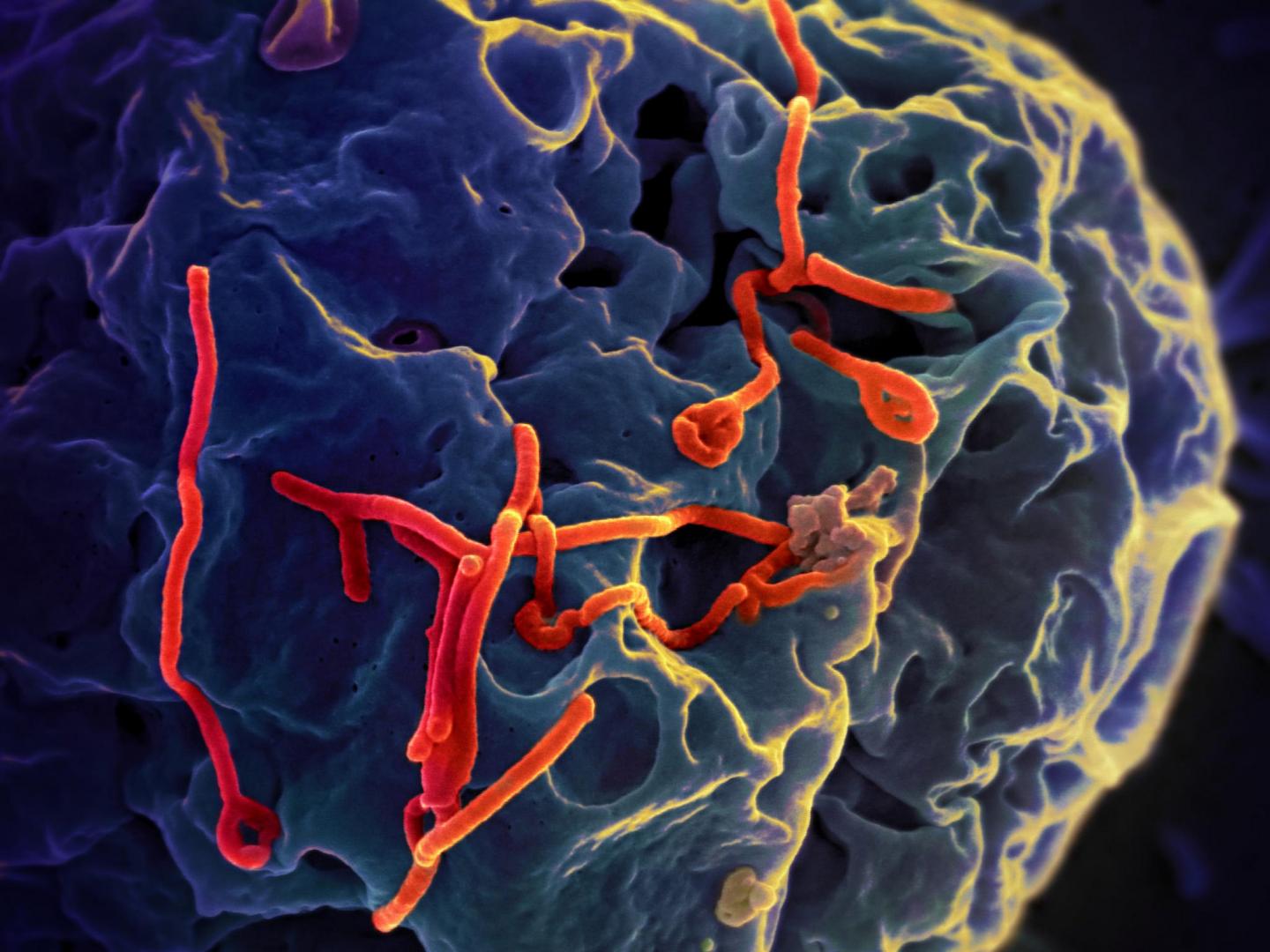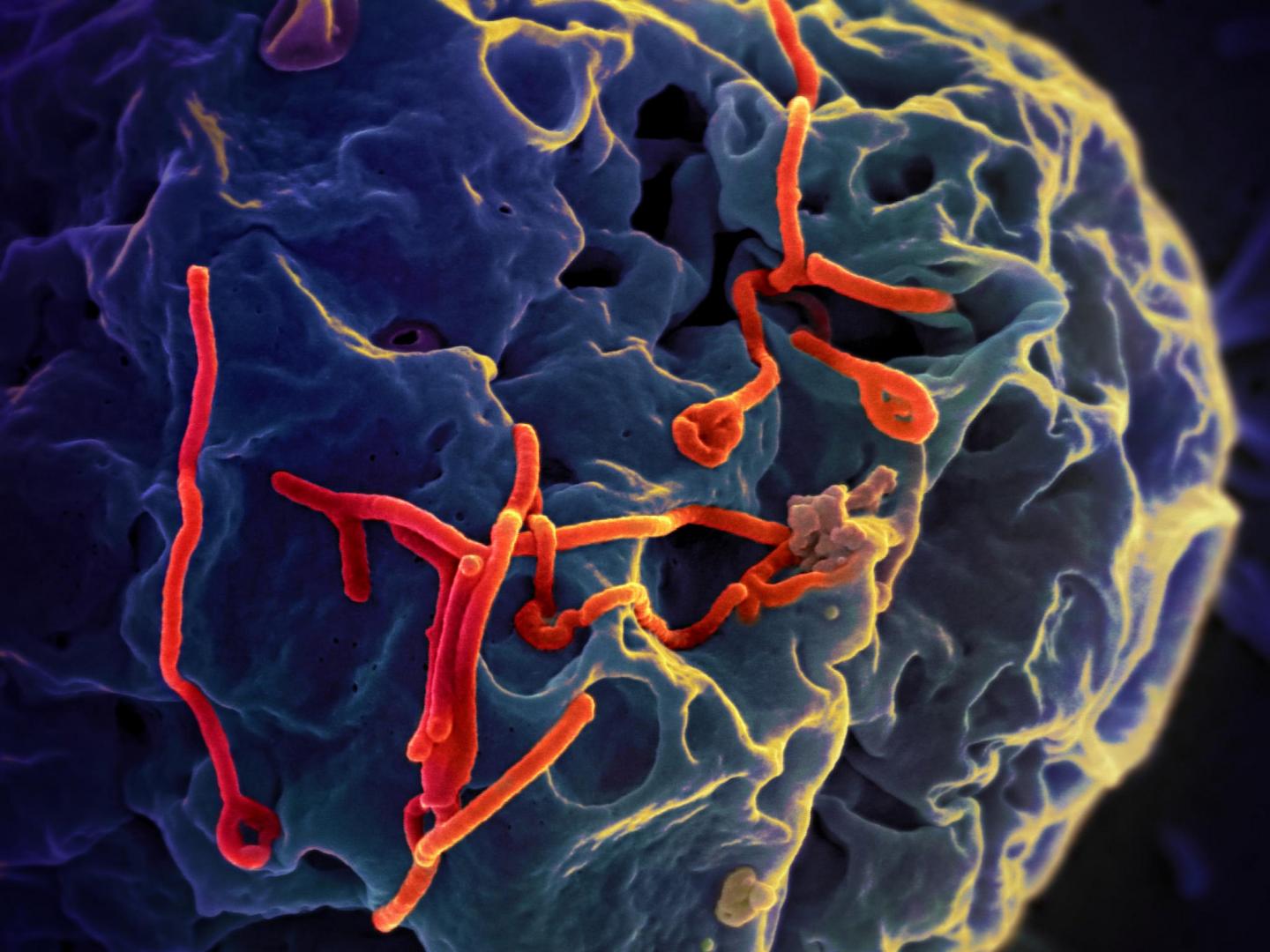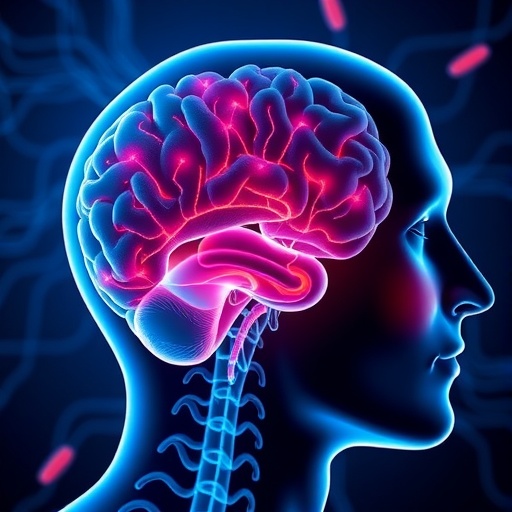
Credit: NIAID
PHILADELPHIA – Protein fragments, called amyloid fibrils, in human semen significantly increase Ebola virus infection and protect the virus against harsh environmental conditions such as heat and dehydration. Researchers from the Perelman School of Medicine at the University of Pennsylvania report these findings in a study published this week in the Proceedings of the National Academy of Sciences (PNAS).
Although Ebola is transmitted primarily through direct contact with blood and other bodily fluids from infected people, follow-up studies from the 2014 epidemic found that men can harbor the virus in their semen for at least 2.5 years, with the potential to transmit the virus sexually during that time. The Penn team surmises that targeting amyloids in semen could prevent a sexually transmitted spread of the Ebola virus.
"Sexual transmission of the Ebola virus poses a significant public health concern, especially in light of the ongoing Ebola outbreak in the Democratic Republic of the Congo," said senior author Paul Bates, PhD, a professor of Microbiology.
Sexual transmission has also been linked to a resurgence of Ebola in Guinea, which had previously been declared Ebola-free during the West Africa Ebola outbreak. However, the role of host factors involved in sexual transmission has remained poorly understood. Strategies for countering amyloids, such as creating small molecules that disrupt its structure, have been developed to slow or halt HIV transmission. The researchers suggest that this approach could be tested for its ability to reduce infection in models of Ebola sexual transmission.
Several types of amyloids found in semen enhance the transmission and infection of other viruses, such as HIV, by helping the virus attach to the membrane surrounding host cells. In a previous study, James Shorter, PhD, an associate professor of Biochemistry and Biophysics and co-author on the PNAS study, identified how yeast heat shock proteins and a small molecule called CLR01 could disrupt the formation of amyloid fibrils found in semen to make human immune cells less likely to be infected with HIV. Stephen Bart, PhD, a postdoctoral fellow in the Bates lab and first author of the PNAS study, applied what he learned on the HIV study to investigate the details of sexual transmission of the Ebola virus.
To test the ability of amyloids to enhance infection, benign viruses with the distinctive Ebola glycoprotein (a marker on the outside of the virus particle) were incubated with physiological concentrations of semen amyloids before infecting a variety of human cell types including macrophages, a primary target of Ebola virus in humans. Infection levels of cells with this benign Ebola virus and amyloids were about 20 times higher compared to cells with the virus alone.
Coauthors Courtney Cohen and John M. Dye from the Virology Division of the U.S. Army Medical Research Institute of Infectious Diseases found similar results using live Ebola in Biosafety Level 4 facilities in Frederick, MD.
The team also found that amyloids enhanced the binding of the virus to cells and increased its ability to be internalized by host cells. The fibrils working within semen significantly altered the physical properties of the virus, making it better able to survive in internal body environments of high temperature and less moisture.
"Given the potential for sexual transmission to spark new Ebola infection chains, we feel we have found relevant factors that may be important targets for inhibiting the spread of Ebola," said Bart.
The team's next steps are to determine if the amyloids have an effect on Ebola in models of vaginal infection and if compounds that disrupt the amyloids are protective. Additionally they plan to analyze amyloids found in other sites, such as the human gut, to see if they play a role in other types of viral infections.
###
This work was funded by the National Institutes of Health (T32-AI-007324, R21-HD-074510), the Bill and Melinda Gates Foundation Grand Challenges Explorations Award, the Defense Threat Reduction Agency (Project CB10166), and the Department of Defense Peer Reviewed Medical Research Program Grant (W81XWH-14-1-0204).
Penn Medicine is one of the world's leading academic medical centers, dedicated to the related missions of medical education, biomedical research, and excellence in patient care. Penn Medicine consists of the Raymond and Ruth Perelman School of Medicine at the University of Pennsylvania (founded in 1765 as the nation's first medical school) and the University of Pennsylvania Health System, which together form a $7.8 billion enterprise.
The Perelman School of Medicine has been ranked among the top medical schools in the United States for more than 20 years, according to U.S. News & World Report's survey of research-oriented medical schools. The School is consistently among the nation's top recipients of funding from the National Institutes of Health, with $405 million awarded in the 2017 fiscal year.
The University of Pennsylvania Health System's patient care facilities include: The Hospital of the University of Pennsylvania and Penn Presbyterian Medical Center — which are recognized as one of the nation's top "Honor Roll" hospitals by U.S. News & World Report — Chester County Hospital; Lancaster General Health; Penn Medicine Princeton Health; Penn Wissahickon Hospice; and Pennsylvania Hospital – the nation's first hospital, founded in 1751. Additional affiliated inpatient care facilities and services throughout the Philadelphia region include Good Shepherd Penn Partners, a partnership between Good Shepherd Rehabilitation Network and Penn Medicine, and Princeton House Behavioral Health, a leading provider of highly skilled and compassionate behavioral healthcare.
Penn Medicine is committed to improving lives and health through a variety of community-based programs and activities. In fiscal year 2017, Penn Medicine provided $500 million to benefit our community.
Media Contact
Karen Kreeger
[email protected]
215-459-0544
@PennMedNews
http://www.uphs.upenn.edu/news/





